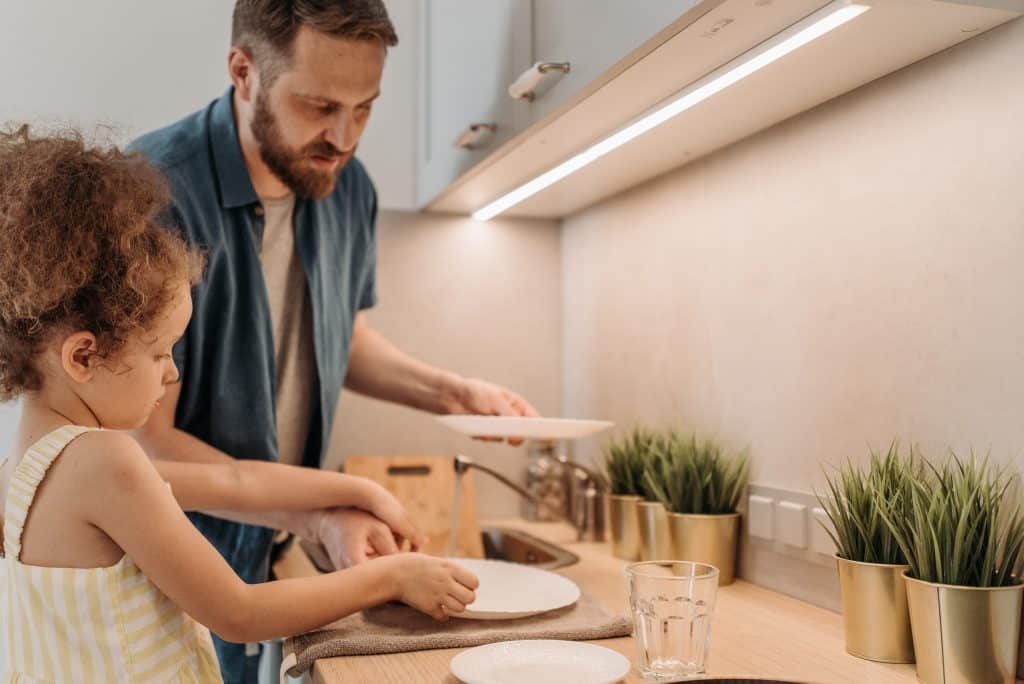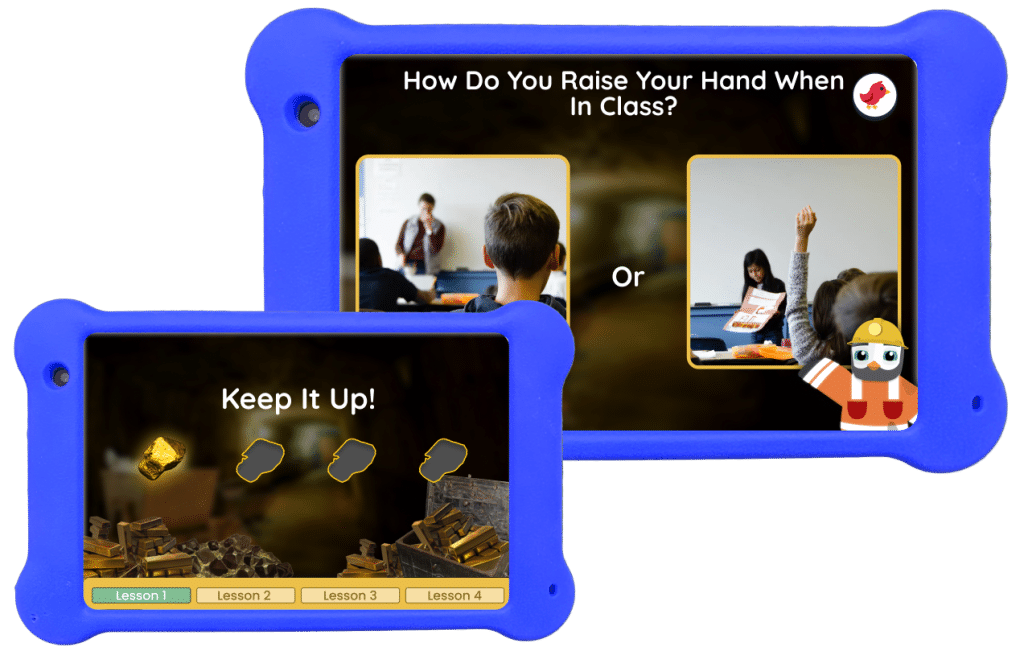Ah, the age-old challenge. Kids often gaze at the newly washed dishes with an odd combination of bewilderment and reluctance. However, it’s a rite of passage for them and a sigh of relief for parents. While handling the task yourself is tempting, we’ve broken down the process into easy, manageable steps that kids can follow. And here’s the kicker: We’ve put all these steps into a catchy Goal Mine class video right here for those who prefer reading, and for our marvelous caregivers seeking clarity, read on. And don’t forget to let the kids watch the video, too – it’s tailored to teach them the ropes!
Table of Contents
Step 1: Check the Dishes
For example, it’s not just about grabbing and stashing. To clarify, we must ensure that the dishes are ready to be placed away.
- Inspect for Dryness: First off, teach your child to feel the dish’s surface. However, it’s not like they’re sensing rain, but a gentle touch will do. Wet spots? Leave it a tad longer. Meanwhile, if it’s scorched, move on to the next check.
- Look for Residue: Above all, cleanliness is critical. Train your kid to examine dishes for food bits or soap streaks. For instance, a quick rinse or wipe may be in order if they spot any.
| Step Number | Step Title | Description |
|---|---|---|
| 1 | Check the Dishes | Inspect dishes for dryness and residue to ensure they’re ready to be put away. |
| 2 | Asking an Adult | Identify safe dishes and ask for assistance when unsure about certain dishes. |
| 3 | Put Dishes Away | Place dishes in designated spots, stack smartly, and handle with care. |
Read more: Best Chore Tracker App
Step 2: Asking an Adult
On the other hand, we understand that not all dishes are kid-friendly. And, well, we don’t want grandma’s heirloom plates becoming a part of a jigsaw puzzle on the floor.
- Identify Safe Dishes: Firstly, show them the difference between plastic, metal, and ceramic. Indeed, those plastic bowls are a safe bet, while porcelain might need a more experienced hand.
- Give Clarification: Kids might need clarification. That is to say, they might need clarification on whether a dish is safe to handle. So, teach them that it’s okay to ask. Moreover, this little step ensures safety and builds their confidence. In short, it’s okay to seek help.

Step 3: Put Dishes Away
Similarly, organizing isn’t about chucking things into a cabinet. It’s a skill, and we’re here to teach it.
- Designated Spots: To clarify, every dish has its home. Show your child where each item belongs. For example, pots go under the counter, plates stack up here, and glasses – there.
- Stack Smartly: Firstly, it’s about balance. Teach them not to stack dishes too high. After that, explain that it prevents wobbly towers and potential crashes.
- Handle with Care: Likewise, it’s essential to emphasize gentle handling. In other words, no throwing or rushing. Moreover, explain that being gentle increases the lifespan of our dishes.
Recommended Kid’s Tablet for Life Skills:
Pro tip— Goally’s Kid’s Tablet has one of the largest libraries of skill-building videos (like “How to Put Clean Dishes Away” and “How to Clean Kitchen Surfaces”) on Goally’s TV App.👇

Read more: Teach Kids How to Clean Kitchen Surfaces
Teaching our kids to put dishes away is more than a chore. It’s about building their independence, organization, and sense of responsibility. While these steps seem simple to adults, it’s a new world for kids. Most importantly, it’s a world they’re eager to master, especially with a bit of guidance.
Now, while our embedded video covers Step 1 in-depth, we’ve got a treasure trove of insightful video lessons that dive deep into every step. Looking for a hassle-free experience? Check out Goally’s dedicated Tablet to unlock the entire lesson range. After all, equipping our kids today makes for a smoother tomorrow. Let’s make chores a breeze together.

Goally
We help parents teach their kids life skills, like doing bedtime and morning independently. Backed by science, we incorporate evidence-based practices and expert-informed designs in all of our apps and content.





